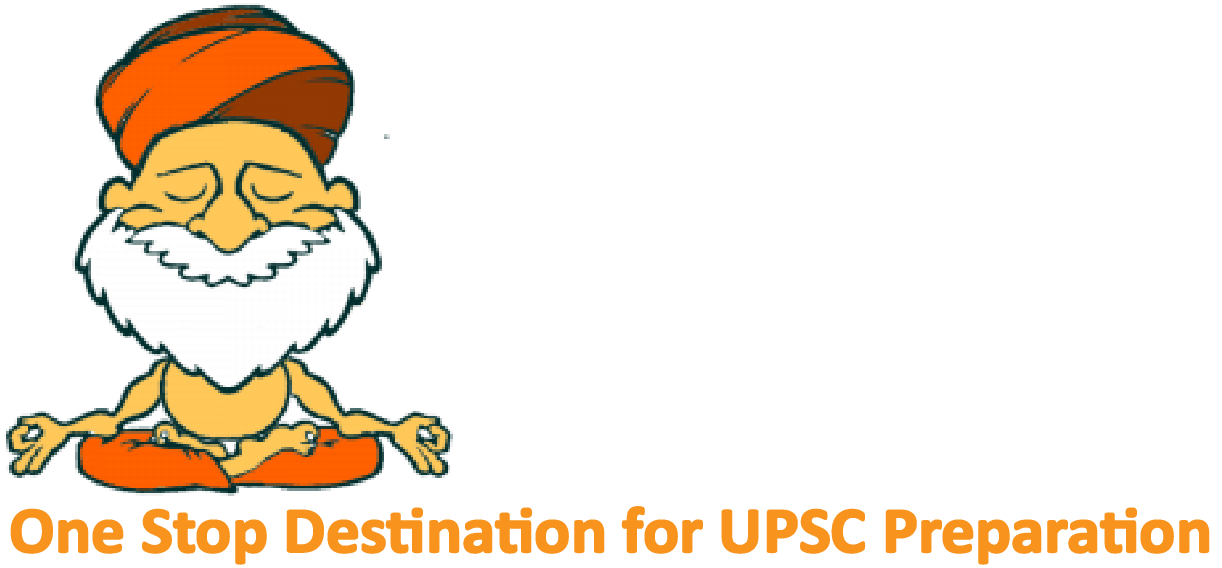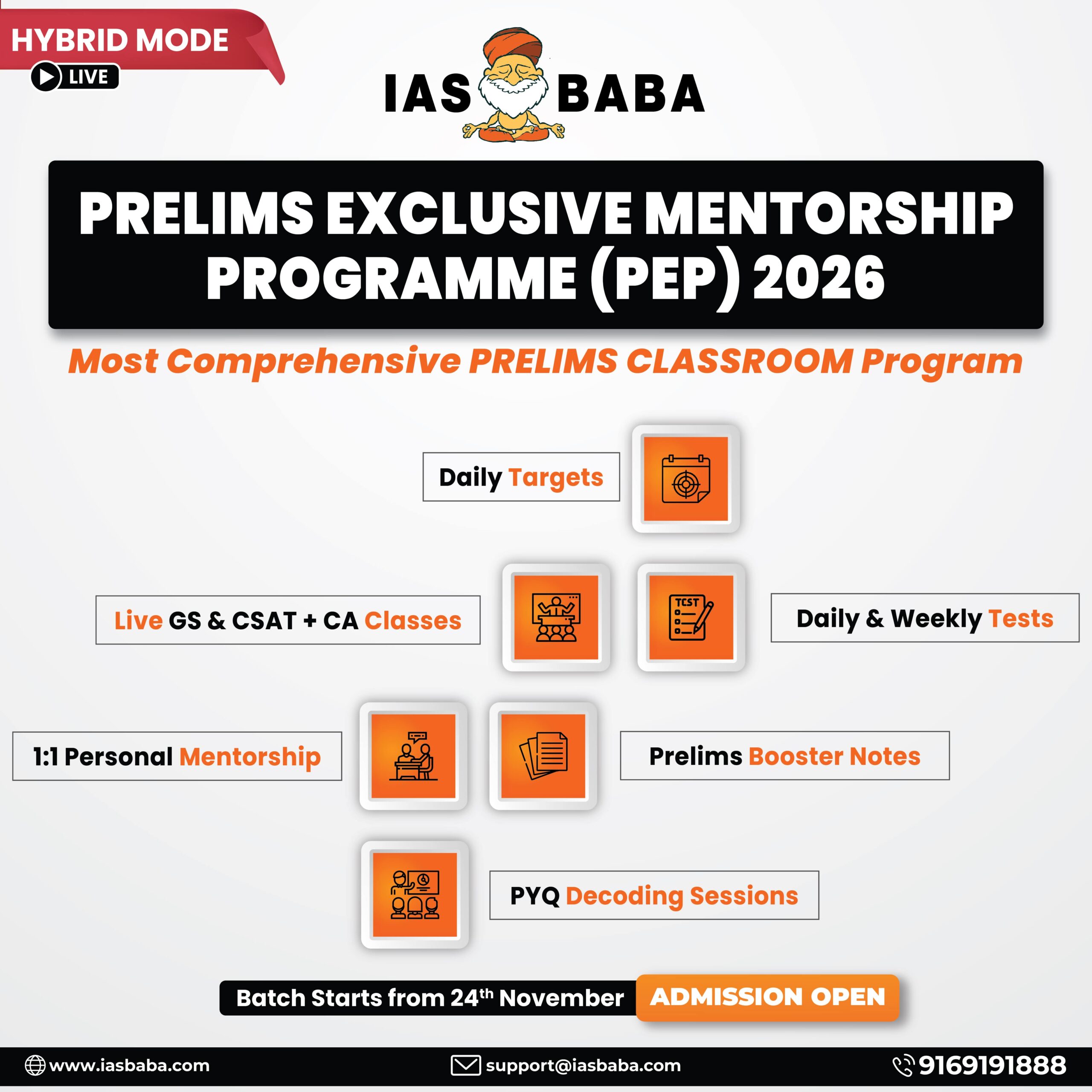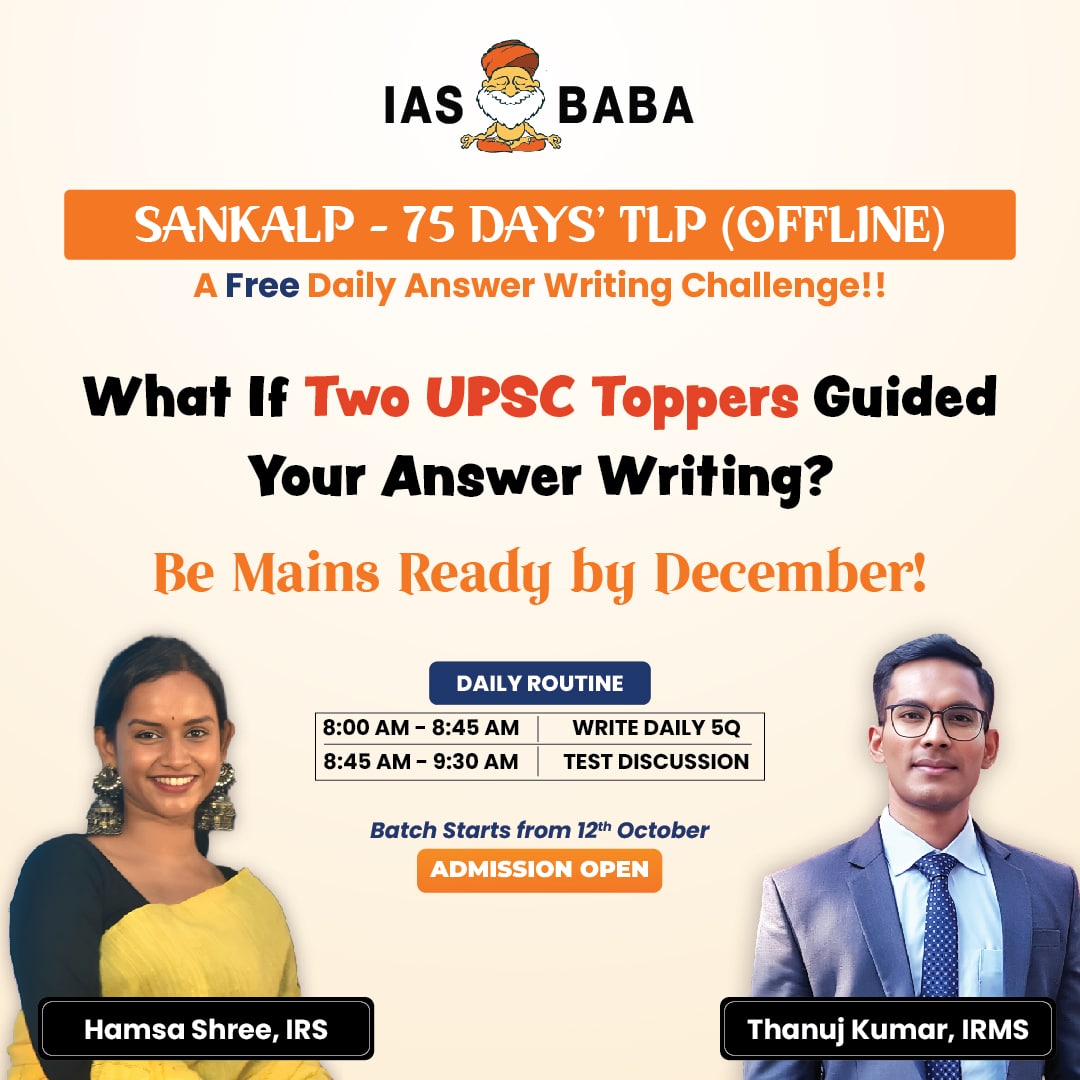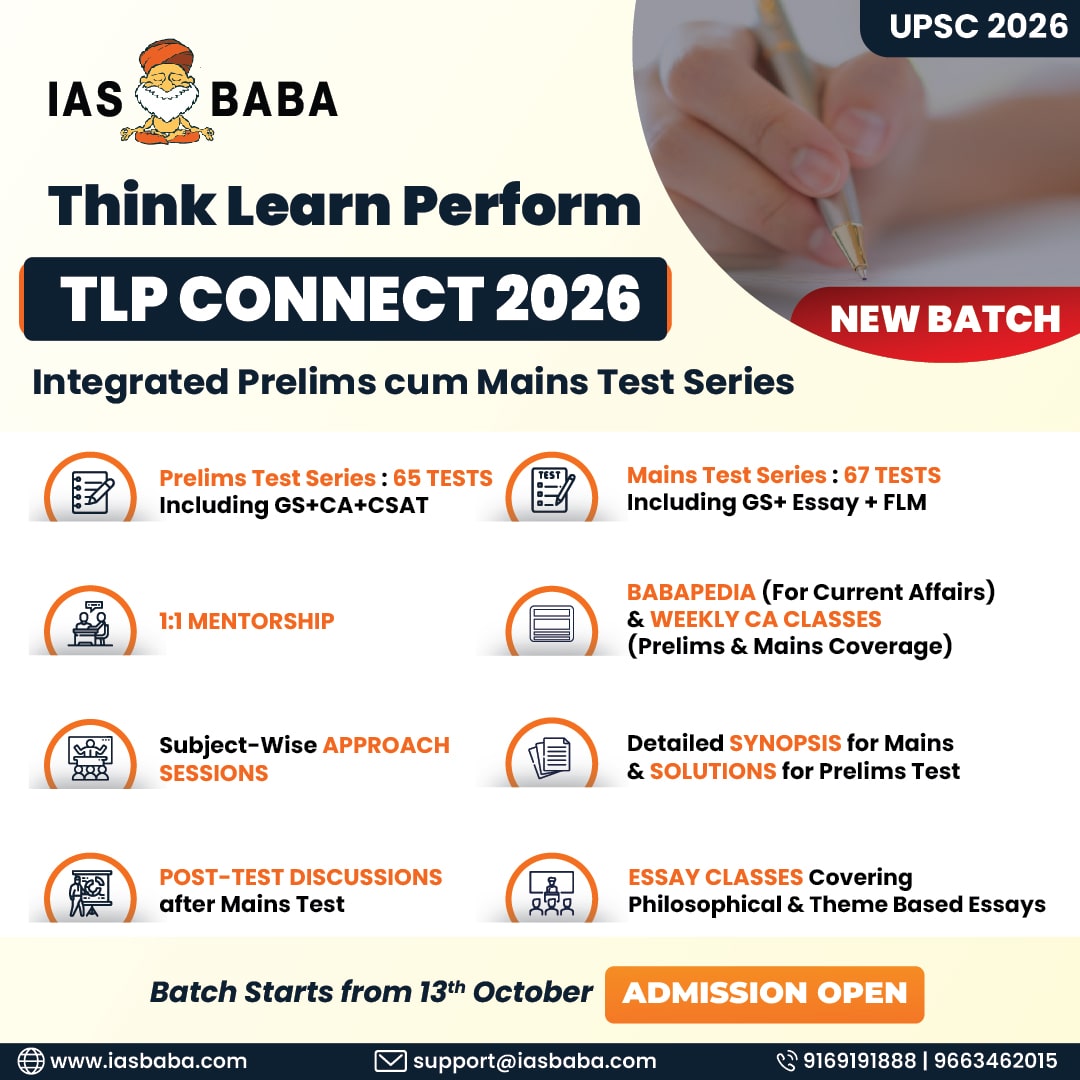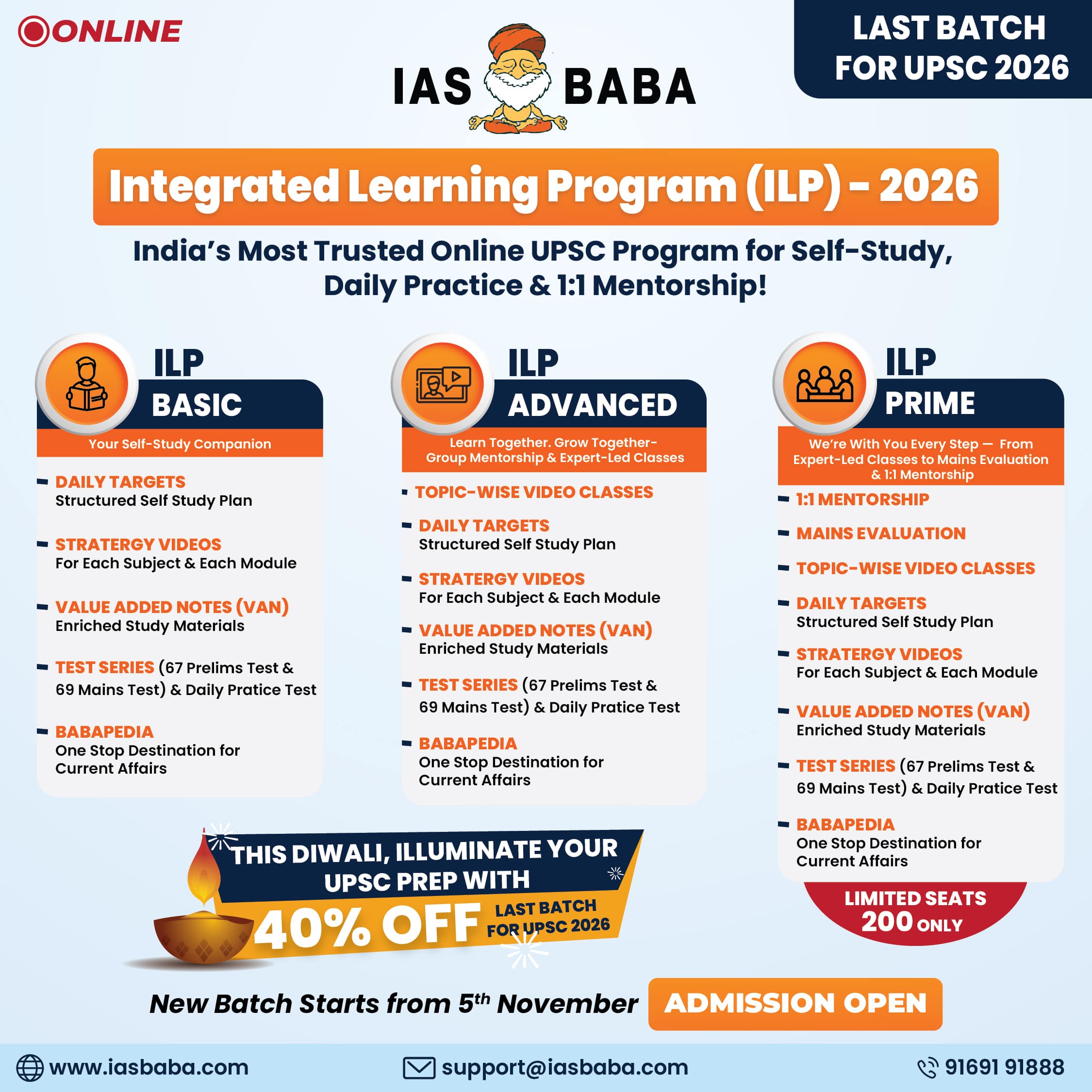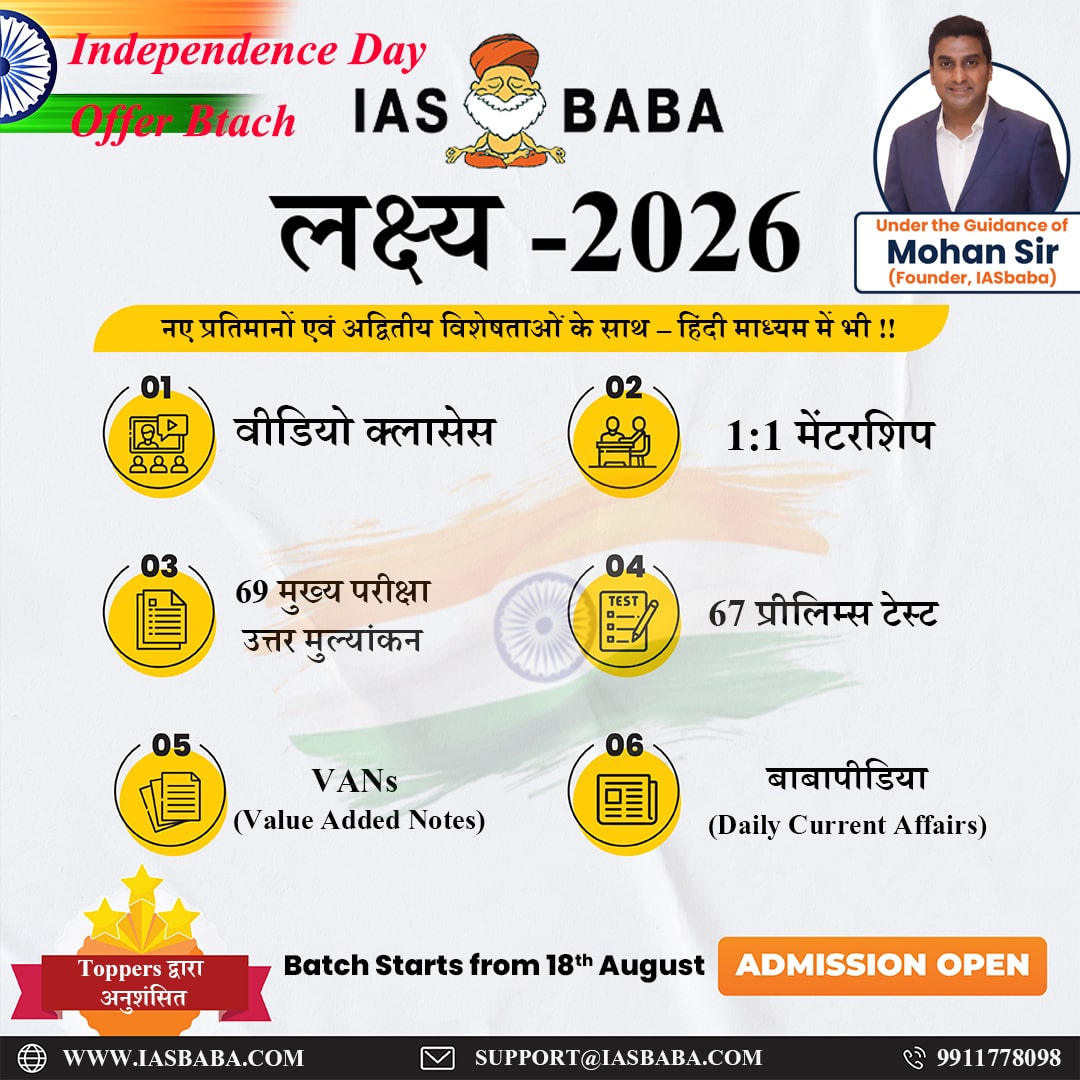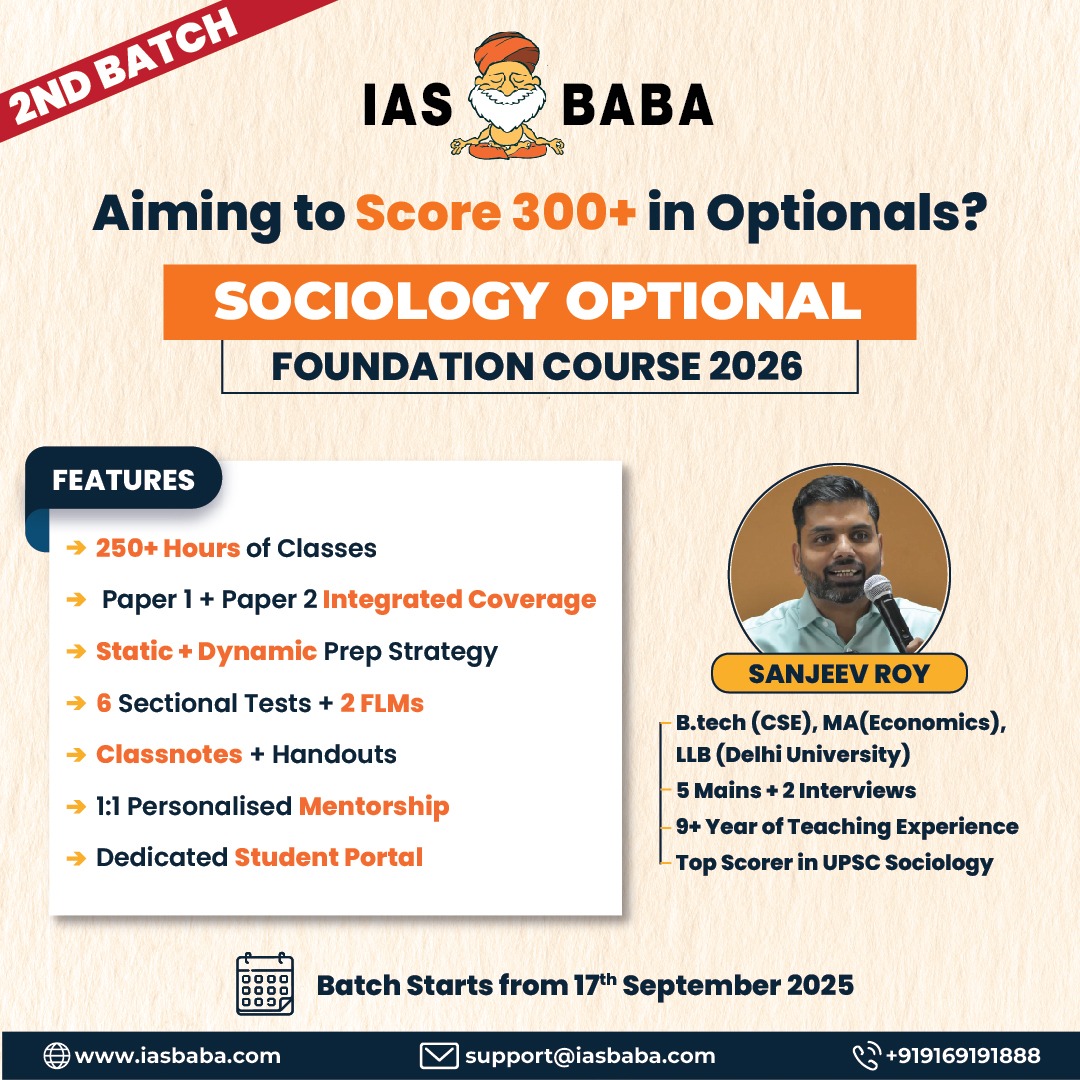IASbaba's Daily Current Affairs Analysis
Archives
(PRELIMS & MAINS Focus)
Syllabus:
- Prelims – GS 2 & GS 3
Context: The Union Budget 2025, emphasised urban development as one of the six domains for transformative reforms. This renewed focus on urban areas points to the government’s commitment to empowering cities as a vital component of India’s development.
Background: –
- By prioritising infrastructure investment, encouraging Urban Local Bodies to diversify their revenue streams, and fostering public-private partnerships, the budget lays the groundwork for greater financial autonomy and sustainable urban development.
Key takeaways
- In the 2025-26 budget, the Ministry of Housing and Urban Affairs (MoHUA), has been allocated Rs. 96,777 crore, accounting for 1.91% of the total estimated expenditure.
- In recent years, budgetary allocation for urban development has seen a steady rise — from 50,000 crore in 2021 to 79,000 crore in 2024 and 96,777 crore in 2025.
- Several key schemes, such as Pradhan Mantri Awas Yojana (PMAY-Urban), which focuses on affordable urban housing; the Smart Cities Mission, which focuses on creating smart cities; and the Atal Mission for Rejuvenation and Urban Transformation (AMRUT), which focuses on water and sanitation infrastructure, are recipients of these budgetary allocations.
- In recent years, allocations have also gone to urban transport projects, particularly Metro rail and Mass Rapid Transit projects. Moreover, to boost incomes for the urban poor, a revamp of the Prime Minister Street Vendors AtmaNirbhar Nidhi (PM SVANidhi) – was also announced.
- The budget also announced “Urban Challenge Fund”. Under this fund, proposals shall be evaluated along three categories: “Cities as growth hubs, creative redevelopment of cities, and water and sanitation projects.” The fund will finance up to 25% of the cost of bankable projects, with a stipulation that at least 50% of the project cost is sourced from bonds, bank loans, or Public-Private Partnerships (PPPs).
- Structuring the Urban Challenge Fund to include private enterprise participation is a signal to empower Urban Local Bodies to raise their own sources of finance to fund projects. As the analysis by PRS Legislative Research points out, the majority of ULBs’ revenue comes from central and state government grants.
Main revenue sources of ULBs
- The main revenue sources of ULBs can be primarily categorised as tax and non-tax revenues. Tax revenues mainly include property tax, professional tax, and entertainment tax, while non-tax revenues include user fees such as parking fees, water supply fees, license fees, and rental income from municipal property.
- For example, in the 2021-22 financial year, the Brihanmumbai Municipal Corporation (BMC) had 19% of its revenue from tax, 54% from fees and user charges, and the remaining from other sources of income. In comparison, the Greater Chennai Corporation (GCC) generated 80% of its income from tax sources and the remaining 20% from other sources of income.
- While large cities have a wider tax base and capacity to generate revenues, smaller cities have to rely on grants from central and state governments. For example, in 2021-22, 57% of Kochi Municipal Corporation’s revenue came from revenue grants, contributions, and subsidies.
How urban local bodies raise funds
- The most prominent example of this is municipal bonds, where ULBs issue bonds. Ahmedabad Municipal Corporation was one of the first ULBs in India to issue a municipal bond to service its water and sanitation projects.
- ULBs can also raise loans from financial institutions such as HUDCO, the World Bank, etc., for specific projects.
- A glance at the database of public-private partnership projects in India shows that at least 5-10% of the total projects are urban projects in the fields of water-sanitation and transport. These projects not only bring private finance onboard, but also facilitate expertise and capabilities from the private sector.
Source: Indian Express
Syllabus:
- Prelims – GS 2 & GS 4
Context: Reflecting a divergence in decision-making on death penalty at different levels in the judiciary, the Supreme Court — for the second consecutive year — did not confirm a single death sentence in 2024 while trial courts awarded 139 such verdicts, according to a report by Project 39A, a criminal justice programme at the National Law University Delhi.
Background: –
- The SC heard six appeals in 2024 — it commuted five death sentences to life imprisonment while one was acquitted.
Key takeaways
- ‘Death Penalty in India: Annual Statistics Report 2024’, states that at the end of 2024, there were 564 death row prisoners in jails across India, the highest number since 2000.
- In 2024, of the 139 death sentences awarded by trial courts, 87 (62%) were imposed in murder cases and 35 (25%) in cases of murder involving sexual offences. This is a reversal from the previous year, when more death sentences were imposed in cases of murder involving sexual offences (59) than in simple murder cases (40).
- The total number of death row prisoners (564 in 2024) has risen every year since 2019, when there were 378 inmates on death row. In 2024, 17 women were on death row.
- The report attributes the high number of death row convicts to a trend of “high imposition of death sentences at trial courts, and the low rates of death penalty appeal disposals at High Courts”.
- Under Section 366 of the Criminal Procedure Code, 1973, and Section 407 of the Bharatiya Nyaya Suraksha Sanhita, 2023, death sentence proceedings must be forwarded to the High Court for confirmation before they can be executed.
Source: Indian Express
Syllabus:
- Prelims & Mains – CURRENT EVENT
Context: As ageing and deficient tankers in the “Russian shadow fleet” traffic the shallow waters of the Baltic Sea, a major oil spill disaster looms, experts say.
Background:
- Security analysts say Russia is operating a large “shadow fleet” of hundreds of vessels, seeking to dodge the sanctions Western nations imposed on its oil exports over its full-scale invasion of Ukraine in 2022.
Key takeaways
- A shadow fleet refers to a group of aging or unregistered vessels that operate outside standard maritime regulations to transport goods—especially sanctioned oil, arms, or illicit cargo—while avoiding detection and international trade restrictions.
Key Features of the Shadow Fleet:
- Use of Aging & Decommissioned Ships
- Many vessels in the shadow fleet are old, poorly maintained, and operate without proper safety inspections.
- They are often sold by reputable shipping companies to anonymous or shell companies in opaque jurisdictions.
- Frequent Flag Changes (Flag of Convenience)
- These vessels frequently change their flag registrations (e.g., from Panama to Liberia) to evade tracking.
- They operate under the jurisdiction of countries with lax maritime laws.
- Manipulation of AIS Transponders (Ghost Ships)
- Ships in the shadow fleet turn off their Automatic Identification System (AIS) to disappear from tracking systems.
- This practice, known as “going dark,” is a violation of international maritime law.
- Ship-to-Ship Transfers (STS Transfers) : They transfer cargo mid-sea to disguise the origin of oil or goods, making it difficult for authorities to trace their movements.
- Ties to Sanctioned Nations & Illicit Trade : Countries like Russia, Iran, North Korea, and Venezuela have been accused of using shadow fleets to bypass U.S. and EU sanctions.
Source: Hindu
Syllabus:
- Prelims & Mains – SCIENCE & TECHNOLOGY
Context: Union Minister for Health and Family Welfare, Shri Jagat Prakash Nadda launched the Annual Nationwide Mass Drug Administration (MDA) Campaign for Lymphatic Filariasis (LF) Elimination.
Background: –
- The campaign covers 111 endemic districts across 13 States with door-to-door administration of filaria prevention medications.
Key takeaways
- Lymphatic Filariasis (Elephantiasis) is a neglected tropical disease (NTD) caused by filarial parasites (Wuchereria bancrofti, Brugia malayi, and Brugia timori).
- LF is commonly known as “Hathi Paon”.
- It is transmitted by mosquitoes (Culex, Anopheles, and Aedes species).
- The infection affects the lymphatic system, causing severe swelling (lymphedema), hydrocele (scrotal swelling), and elephantiasis (skin thickening & enlargement of limbs).
- Acute Symptoms:
- Fever, pain, swelling of lymph nodes.
- Inflammation of the skin and lymphatic vessels.
- Chronic Symptoms:
- Permanent swelling of limbs, genitals, and breasts (Elephantiasis).
- India accounts for ~40% of the global LF cases.
- Government Initiatives to Eliminate LF:
- The Mass Drug Administration (MDA) campaign involves the supervised administration of a combination of anti-filarial medicines to all eligible individuals in LF-endemic areas, regardless of whether they show symptoms.
- The goal of MDA is to reduce the spread of LF by eliminating the microscopic filarial parasites present in the bloodstream of infected individuals, thus preventing further transmission by mosquitoes.
- India’s Roadmap for LF Elimination by 2027
- Mass Drug Administration (MDA) campaigns in endemic districts.
- Morbidity management and disability prevention (MMDP) for affected individuals.
- Vector control measures like mosquito habitat management.
Source: PIB
Syllabus:
- Prelims – CURRENT EVENT
Context: Union Minister for Education, Shri Dharmendra Pradhan, launched 41 new books under the PM YUVA 2.0 scheme at the New Delhi World Book Fair 2025 today.
Background: –
- The Pradhan Mantri YUVA (Young, Upcoming and Versatile Authors) Scheme is an initiative by the Indian government aimed at nurturing young literary talent.
Key takeaways
- Launched on May 29, 2021, by the Ministry of Education, PM YUVA is designed to mentor young authors below the age of 30. The scheme aims to cultivate a new generation of writers who can contribute to the literary landscape of India.
- The primary objectives of PM YUVA include:
- Mentorship: Providing guidance and support to young authors through experienced mentors.
- Literary Development: Encouraging the creation of high-quality literary works in Indian languages.
- Cultural Promotion: Highlighting Indian culture, heritage, history, and languages through literature.
- Global Reach: Expanding the reach of Indian literature to a global audience.
Key Features
- Selection Process:
- An all-India contest is conducted to select 75 young authors.
- Participants submit a manuscript based on a specified theme.
- A committee constituted by the National Book Trust (NBT) evaluates the submissions.
- Mentorship and Scholarship:
- Selected authors receive guidance from established mentors to develop their manuscripts into full-fledged books.
- A consolidated scholarship of ₹50,000 per month is provided for six months to each author.
- Publication and Royalty:
- The developed manuscripts are published by the NBT.
- Authors receive a 10% royalty on the published books.
- Themes:
- First Edition (2021): Focused on the “National Movement of India,” highlighting unsung heroes and lesser-known aspects of India’s freedom struggle.
- Second Edition (2022): Centered on “Democracy (Institutions, Events, People, and Constitutional Values),” aiming to develop writers who can explore various facets of democracy in India.
Source: PIB
Practice MCQs
Q1.) Consider the following statements regarding the “Shadow Fleet”:
- It consists of vessels that frequently change their flag registration to evade tracking and sanctions.
- These ships turn off their Automatic Identification System (AIS) to operate undetected, violating international maritime laws.
- The shadow fleet primarily operates in the Indian Ocean to facilitate illegal fishing activities.
Which of the statements given above is/are correct?
(a) 1 and 2 only
(b) 2 and 3 only
(c) 1 and 3 only
(d) 1, 2, and 3
Q2.) With reference to Lymphatic Filariasis (LF), consider the following statements:
- LF is caused by parasitic worms, including Wuchereria bancrofti and Brugia species.
- The primary mode of transmission is through contaminated water and food.
- India’s strategy to eliminate LF includes Mass Drug Administration (MDA) and vector control measures.
Which of the statements given above is/are correct?
(a) 1 and 3 only
(b) 2 and 3 only
(c) 1 and 2 only
(d) 1, 2, and 3
Q3.) Which of the following statements about the Pradhan Mantri YUVA (Young, Upcoming, and Versatile Authors) scheme is correct?
- It is an initiative of the Ministry of Education, launched in 2021, to mentor young authors under the age of 30.
- Selected authors under the scheme receive a monthly scholarship and mentorship.
- The books developed under this scheme are published internationally, bypassing Indian publishers.
Select the correct answer using the code below:
(a) 1 and 2 only
(b) 2 and 3 only
(c) 1 and 3 only
(d) 1, 2, and 3
Comment the answers to the above questions in the comment section below!!
ANSWERS FOR ’ Today’s – Daily Practice MCQs’ will be updated along with tomorrow’s Daily Current Affairs
ANSWERS FOR 11th February – Daily Practice MCQs
Q.1) – b
Q.2) – b
Q.3) – b

